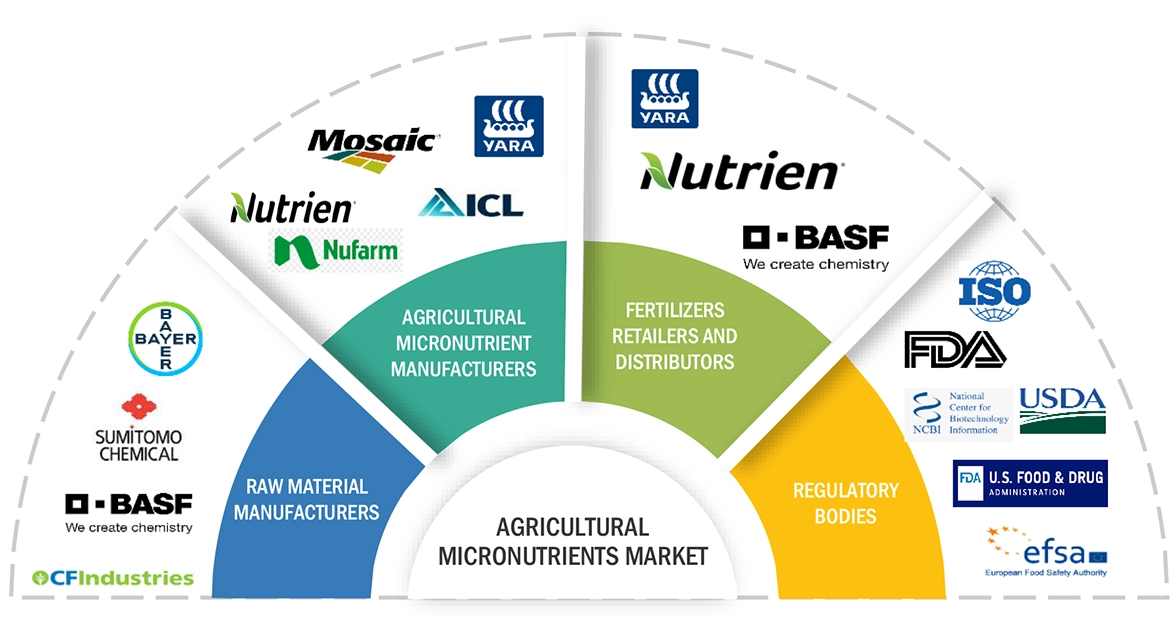The agricultural micronutrients market size is expanding steadily as farmers and agribusinesses turn to nutrient solutions for better yields and healthier crops. According to a research report “Agricultural Micronutrients Market by Type (Zinc, Boron, Iron, Manganese, Molybdenum, Copper), Mode of Application (Soil, Foliar and Fertigation), Form (Chelated and Non-Chelated Micronutrients), Crop Type and Region – Global Forecast to 2028” published by MarketsandMarkets, the market is valued at USD 4.5 billion in 2023 and is projected to reach USD 6.9 billion by 2028, growing at a CAGR of 8.6%.
Agricultural micronutrients—essential minerals like zinc, boron, and iron—are required in small amounts but play a big role in plant health, crop productivity, and food quality. The agricultural micronutrients market trends reflect rising population, increasing soil deficiencies, and the demand for nutrient-rich food.
Market Insights
Boron Segment Leads Growth
Boron is expected to grow at the highest CAGR due to its critical role in plant development. High-value crops like fruits and vegetables are particularly sensitive to boron levels, making supplementation essential for quality and yield.
Fertigation Gains Traction
Fertigation—the process of applying micronutrients through irrigation—is gaining popularity for its precision, efficiency, and ability to minimize resource waste. It fits perfectly with modern sustainable farming practices.
Request Specialized Data to Suit Your Business Requirements
Cereals & Grains Remain Crucial
Staple crops such as corn, rice, and wheat dominate global food demand. Farmers are increasingly using micronutrients to boost both quality and nutritional value in cereals and grains, aligning with changing dietary preferences.
South America Shows Strong Potential
With diverse soil conditions, rising population, and expanding agribusiness, South America is set for significant growth. The adoption of modern farming methods and government support is accelerating micronutrient use in the region.
Key Growth Drivers
The agricultural micronutrients market growth is supported by several factors:
- Rising food demand due to population growth.
- Soil nutrient deficiencies caused by intensive farming practices.
- Precision farming technologies that improve nutrient application.
- Growing farmer awareness supported by education and government initiatives.
Key Market Players
- BASF SE (Germany)
- Nouryon (Netherlands)
- Nufarm (Australia)
- Yara International ASA (Norway)
- Coromandel International Ltd (India)
These companies are actively innovating and expanding, with strategies highlighted in the latest agricultural micronutrients market report.
Frequently Asked Questions
Q1. What are agricultural micronutrients?
Agricultural micronutrients are essential minerals like zinc, boron, and iron that plants require in small amounts to ensure proper growth, development, and productivity.
Q2. What is driving the growth of the agricultural micronutrients market?
The main growth drivers are rising food demand, soil nutrient deficiencies, adoption of precision farming, and the need to improve crop quality and yield.
Q3. Which segment is expected to grow the fastest?
The boron segment is projected to grow at the highest CAGR due to its importance in fruits, vegetables, and other high-value crops.
Q4. Why is fertigation gaining popularity?
Fertigation allows precise and efficient nutrient delivery through irrigation systems, reducing waste and enhancing plant uptake.
Q5. Which regions are showing significant growth in the market?
South America is projected to experience strong growth, supported by modern farming adoption, government initiatives, and increasing food demand.

